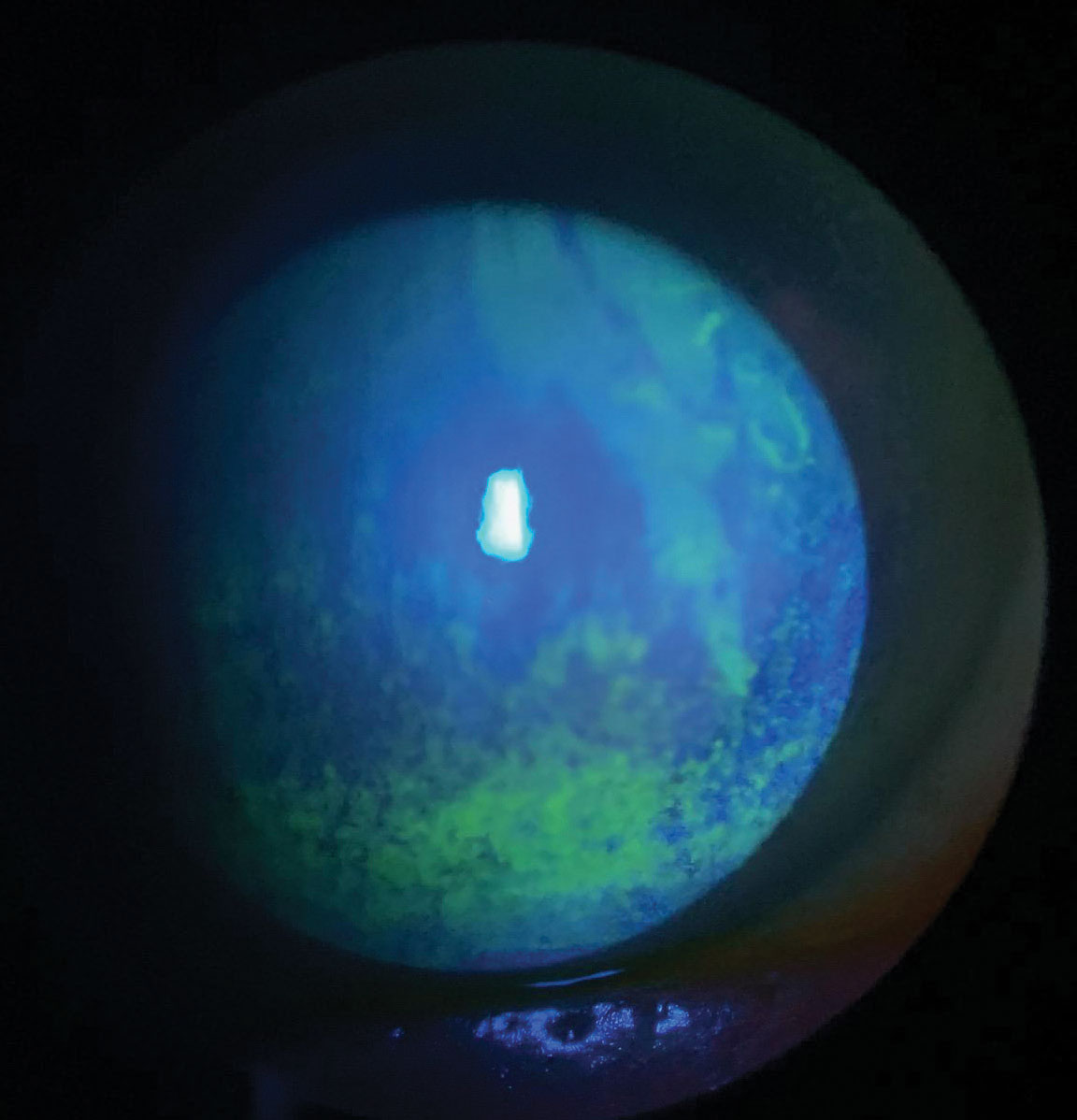 |
This study noted elevated tear osmolarity levels in patients suffering from both periodontitis and DED vs. patients with only one or none of those conditions. Photo: Scott G. Hauswirth, OD. Click image to enlarge. |
While an association between dry eye disease (DED) and periodontitis has never been established in the literature, the role of inflammation in both diseases has been separately documented and shows that the two conditions share common inflammatory pathways. Considering this potential interplay, researchers in Turkey recently performed a cross-sectional study to provide further insights, the findings of which revealed a significant association between gum disease and the severity of dry eye signs and symptoms.1
The study included 168 healthy control subjects, 172 patients with both dry eye and periodontitis, 175 patients with dry eye and 169 patients with periodontitis. The researchers gathered data on subjects’ tear break-up time, Ocular Surface Disease Index (OSDI) scores, tear osmolarity, Schirmer values and Oxford corneal staining score. Since a previous study found that the neutrophil-to-lymphocyte ratio, an inflammatory biomarker, is elevated in DED, researchers examined this metric in their study when comparing DED patients to those with both dry eye and gum disease.2
Patients with both DED and periodontitis exhibited significant elevations in tear osmolarity levels, increased OSDI scores and decreased tear break-up time and Schirmer values when compared to DED patients without periodontitis. Similar results were observed when comparing the DED and periodontitis patients to both the healthy subjects and the periodontitis patients. However, no significant difference was shown in Oxford staining score between the DED and periodontitis patients and the other groups. Also, neutrophil-to-lymphocyte ratios were reported higher among patients with both conditions.
“To the best of our knowledge, this study represents the first report to highlight a potential association between periodontitis and DED,” stated the researchers in their study, adding that future investigations are needed to validate their findings. They pointed out multiple limitations in their study, such as having a small sample population, not assessing inflammatory markers or performing meibography when evaluating the tear film and the inability to examine how dry eye clinical tests are impacted by different severity levels of periodontitis.
“Based on these statistically significant findings, we strongly advocate for periodontologists and [eyecare providers], despite being from distinct disciplines, to comprehensively evaluate their patients for both ocular and oral symptoms,” concluded the researchers in their study. “Furthermore, it is crucial to recognize the impact of periodontal health on overall ocular health to provide comprehensive care to these individuals.”
1. Kaya F, Eliaçık BK, Koc H, Eliaçık M. Effect of periodontitis on dry eye disease signs and symptoms: a cross-sectional study. Oral Hlth Prev Dent. 2024;22:309-16. 2. Ozcan DO, Kurtul BE, Ozcan SC, Elbeyli A. Increased systemic immune-inflammation index levels in patients with dry eye disease. Ocul Immunol Inflamm. 2020;1–5. |


